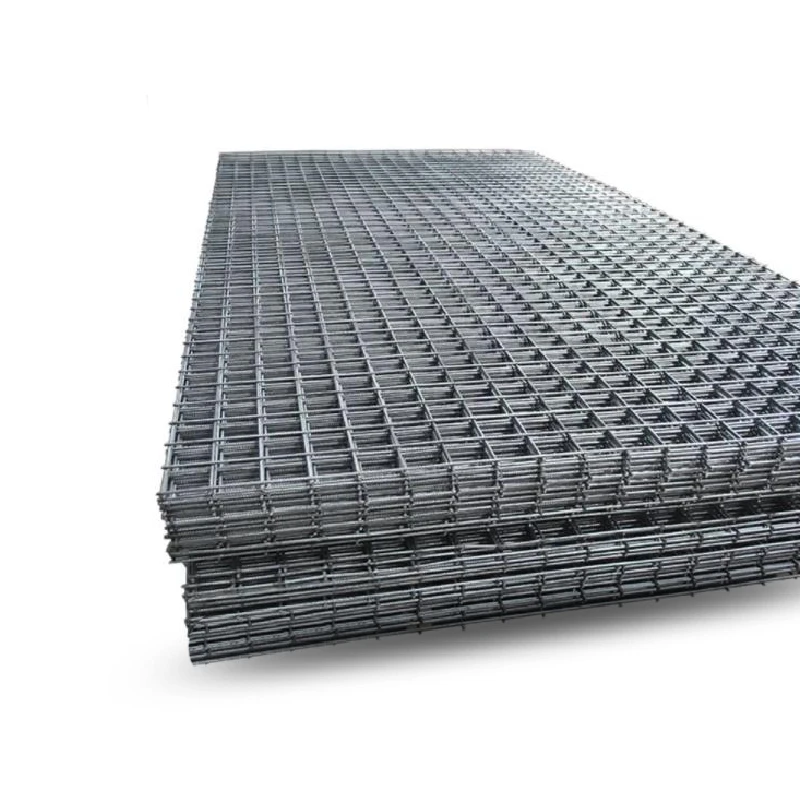Nov . 30, 2024 08:41 Back to list
Welded Wire Fabric for Enhanced Concrete Strength and Structural Integrity
Welded Wire Concrete Reinforcement A Comprehensive Overview
Concrete is one of the most widely used construction materials globally due to its strength, durability, and versatility. However, as a brittle material, concrete can crack and fail under tensile forces. To enhance its structural integrity, various reinforcement techniques have been developed, among which welded wire reinforcement (WWR) stands out as an effective and efficient choice.
What is Welded Wire Reinforcement?
Welded wire reinforcement consists of a grid made from steel wires that are welded together at their intersections, creating a robust lattice framework. This framework is designed to be embedded in concrete to improve its tensile strength, helping the concrete withstand forces that would otherwise lead to cracking or structural failure.
The mesh is typically manufactured in various sizes, wire diameters, and spacing dimensions, making it a versatile option for different types of construction projects. WWR can be produced in sheets or rolls, offering ease of handling and installation on construction sites.
Advantages of Welded Wire Reinforcement
1. Strength and Durability WWR significantly enhances the tensile strength of concrete. The welded intersections provide superior load distribution compared to traditional reinforcement methods, minimizing the risk of cracking and maintaining the integrity of concrete structures under various loads.
2. Ease of Installation The flat sheets or rolls of WWR are easier and quicker to place than individual rebar, which often requires complex tying and positioning. This efficiency can lead to reduced labor costs and faster project completion.
3. Customization Welded wire reinforcement can be tailored to fit specific construction demands. Different mesh sizes and wire diameters can be selected based on the load requirements of the project, ensuring optimal performance.
4. Versatility WWR is suitable for a wide range of applications, from paving and flooring to walls and slabs. It is commonly used in residential, commercial, and industrial construction projects.
welded wire concrete reinforcement

5. Corrosion Resistance Many manufacturers produce WWR with protective coatings, such as epoxy or galvanized finishes, to improve resistance against corrosion. This is paramount in environments where moisture and chemicals can accelerate the degradation of conventional steel reinforcement.
Installation of Welded Wire Reinforcement
The installation process for WWR is straightforward. First, the concrete area is prepared, with proper subgrade compaction to ensure a stable foundation. Next, the welded wire mesh is laid out on the surface. In slabs, it is often positioned in the mid-depth of the concrete to maximize its effectiveness.
To ensure proper embedding in the concrete, the mesh can be held in place with spacers or supports. Once the mesh is adequately positioned, concrete is poured over it, encasing the WWR within the structural element. Proper compaction while pouring is crucial to eliminate air pockets and ensure a uniform distribution of concrete around the reinforcement.
Applications of Welded Wire Reinforcement
Welded wire reinforcement is commonly used in various construction applications, including
- Slabs on grade WWR provides essential support for both residential and commercial slabs, resisting stresses and preventing cracking. - Pavements It is widely used in roadways, parking lots, and sidewalks, where a durable surface is needed to withstand traffic loads. - Walls In tilt-up constructions or precast concrete walls, WWR enhances the structural integrity and longevity of the panels. - Bridges and Overpasses WWR is utilized in the construction of bridge decks, providing added strength and flexibility to accommodate heavy loads.
Conclusion
Welded wire concrete reinforcement has emerged as a critical component in modern construction practices. Its unique properties of strength, ease of installation, and versatility make it an ideal choice for a variety of structures. As the construction industry advances and the demand for durable, resilient materials grows, WWR continues to play a vital role in ensuring the longevity and reliability of concrete structures. By choosing welded wire reinforcement, builders and engineers can effectively address the challenges posed by tensile forces and create safer, more robust infrastructures for the future.
-
Reinforcing Mesh: Core Material of the Construction Industry
NewsJul.07,2025
-
Welded Wire Fabric Reinvented for Modern Projects
NewsJul.04,2025
-
Superiority of Stainless Steel Woven Mesh
NewsJul.04,2025
-
Key Types of Razor Wire and Their Applications
NewsJul.04,2025
-
Durable Metal Fence Types for Security
NewsJul.04,2025
-
Best Materials for Livestock Fence
NewsJul.04,2025
products.







